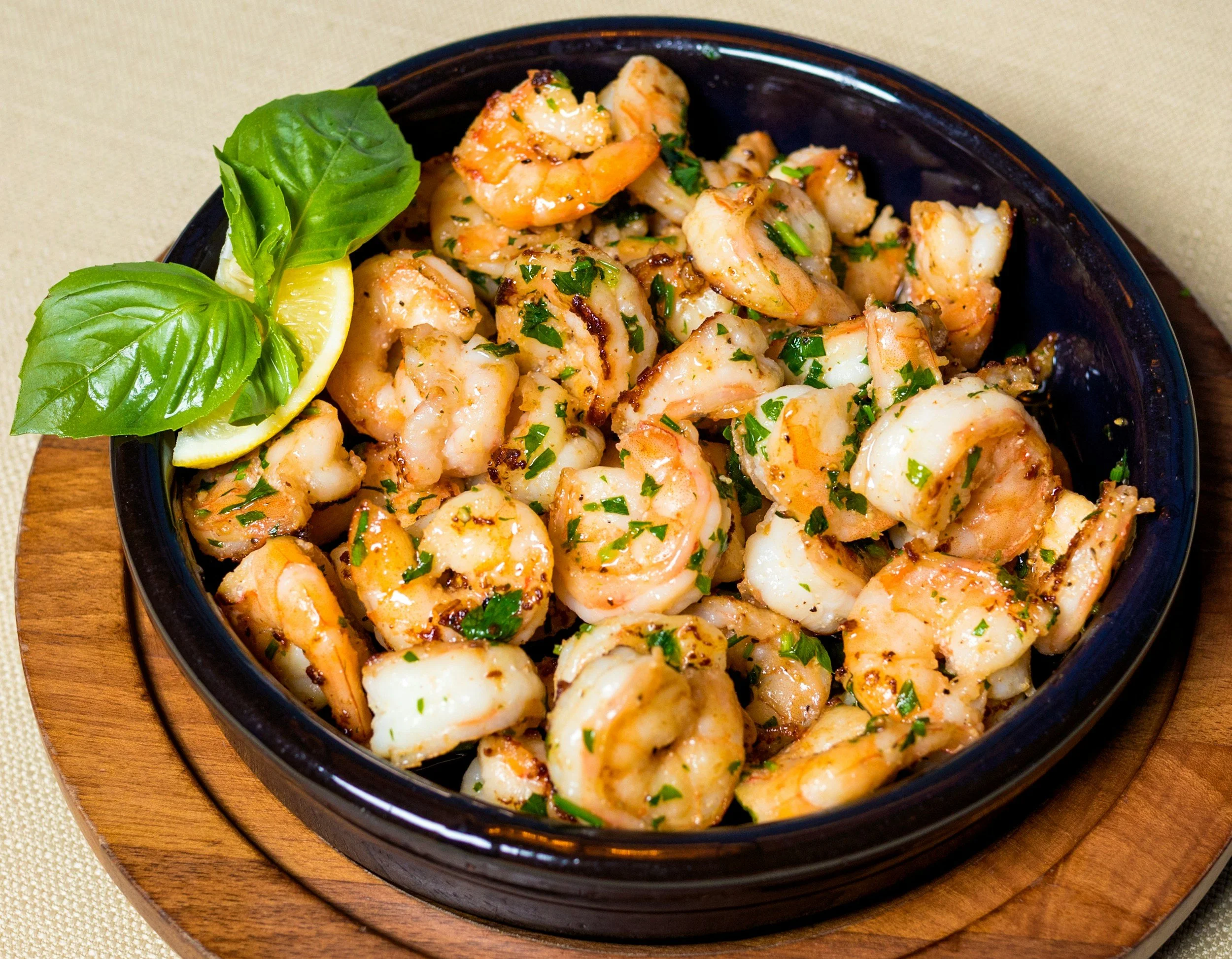Does eating tilapia lead to heart disease?
/We all know that eating a Mediterranean diet leads to a longer, healthier life. A big part of this diet is fish.
Not all fish are created equal, though. In fact, some doctors have claimed that eating certain kinds of fish may be worse than eating a slab of pork bacon, a box of doughnuts, or a fat, juicy hamburger!
What determines whether any particular kind of fish is good or bad for your health depends on a number of factors, like whether the fish has a high mercury content, whether it is an apex predator fish (those fish eat others that may be bad for your health), or whether it is a farmed or wild caught fish.
Many health care practitioners and health advocates say that it’s better to eat wild caught fish than farmed fish, and that smaller, vegetarian fish are healthier than large, apex predator fish, but even this general rule is not as simple as it sounds. If you want more details, I have dealt with the topic of tilapia and other fish in Go Green without Going Broke, the second in my series of Green Guidebooks, which you can snag for free on Amazon.com as a subscriber to Kindle Unlimited. Just click the image to the right to access the book.
Right now, though, I want to tell you about a fish that, not long ago, we were being advised to eat at least once a week: tilapia. Tilapia is actually the name given to dozens of species of cichlid fish, native to Africa. Because of its commercial success, tilapia is now farmed in over 100 countries. In the US, it has become one of the 4 most popular kinds of fish consumed. It’s mild-tasting, inexpensive, and easy to cook.
And it’s also full of harmful chemicals and gender-bending hormones!
Turns out, if you live in the US and regularly consume tilapia, or if you shop anywhere that gets its tilapia from farms in China, you may be undermining your health. Eating farm-raised tilapia can cause the kind of inflammation that leads to heart disease, arthritis, asthma and other serious health problems.
Now I’m not talking here about wild tilapia, and I’m also not talking about the small percentage of US farm-raised tilapia that is locally grown in aquaponics systems (aquaponics is a symbiotic food production system that feeds the waste-filled water from aquatic farms to hydroponically-grown plants. The waste water is converted to nitrates and nitrites, which provide nutrients to the plants.)
Most of the tilapia sold in the US is not wild-caught, because there is virtually no commercial harvesting of wild tilapia today. Instead, most of the tilapia in the US comes from China, followed by Ecuador, Indonesia, and Honduras.
One reason that tilapia may cause inflammation has to do with the ingredients they naturally contain. A study by researchers at Wake Forest University, published in 2008 in the Journal of the American Dietetic Association found that farmed tilapia and catfish (unlike their wild variants) contain high amounts of omega 6 fatty acids and relatively low amounts of omega 3s. Nowadays we know that omega 3s are heart-healthy fatty acids, but hear little about omega 6s.
Omega 6s are believed to play a role in increasing blood clots. They are also believed to cause inflammation and to be susceptible to oxidation, which can translate into a higher risk for arthritis, inflammatory bowel disease, cardiovascular disease, and arthritis. Therefore, the NIH study suggested that farmed tilapia is potentially harmful to human health because of its high omega 6 to omega 3 ratio.
The reason that farmed tilapia contains much higher amounts of omega 6s than omega 3s has to do with what they are being fed. They eat a diet predominant in soy or corn, fed to them in the form of pellets (whether they are being fed sewage from poultry or pork farms, at least in any widespread manner, seems to be the stuff of urban legend). Corn feed in particular raises the levels of omega 6s in fish.
Tilapia with a side of chemicals?
The bigger concern may not even be what the fish are eating, but with the dumping of chemicals and drugs into the ponds where the fish are farmed.
There are a few chemicals that are really alarming: some of them are found in adhesives, plastics, and detergents, while one is used to change the gender of the fish.
This gender-bending chemical, 17 alpha-methyltestosterone, is used in virtually all of the tilapia products that are sold internationally. It is used to help produce predominantly male (and thus, bigger), fish. While its legal use varies from country to country, it is generally believed by the US government to be harmless to human health, provided that it is only used at a very early stage in the tilapia’s development and that it is used in low levels. However, two questions remain about the use of this chemical: the bioaccumulation of 17 alpha-methyltestosterone in fish ponds from uneaten pellets is largely unknown, and the long-term human health effects of ingesting this drug are unstudied. Some studies suggest, however, that 17 alpha-methyltestosterone is toxic to the human liver in high concentrations, which may occur over time, with regular ingestion of it. For this reason and others, Germany has taken 17 alpha-methyltestosterone off the market.
One other chemical used in the commercial farming of tilapia, polyethylene vinyl acetate, is believed to be safe for human use. It has been widely accepted as a safer alternative to BPA in softening plastic goods, like baby teethers.
Yet polyethylene vinyl acetate also causes the overbreeding of tilapia. After being given this chemical, the fish mature after only 2-3 months, and then breed at the rate of about once a month. This results in fish ponds being overstocked with uneven sizes of fish (because the growth of some of them is stunted in such crowded conditions). 17 alpha-methyltestosterone is then used to produce more male (and thus bigger) fish more quickly, thereby ensuring a more uniform stock.
The third chemical used in the farming of tilapia is sodium tripolyphosphate, or STPP. It is suspected of being a neurotoxin, according to the Toxic Chemicals Registry of the National Institute for Occupational Safety and Health (NIOSH). Used to make fish products appear firmer and glossier, it can also lead consumers to buy fish that is spoiled or past its expiration date. While the European Union, Canada, and Brazil have all placed limits on how much STPP is allowed in the manufacture of seafood products, the US does not have any limits on its use.
So what’s the bottom line on eating tilapia? Should you avoid it or not?
Eating tilapia can be healthy
I disagree with the reports out there that say you should not eat tilapia at all. The truth is, grassroots consumer guidance, regulatory reports, and the majority of clinical evidence, taken together, all suggest that in small doses, tilapia won’t be harmful to your health. Still, the news about tilapia farming in China is alarming and shouldn’t be ignored. According to California’s Monterey Bay Aquarium Seafood Watch, despite improvements in the environmental standards guiding the farming of tilapia in China and Taiwan, there is evidence that the Chinese farmers still do use some chemicals – antibiotics and fungal treatments like nitrofurans and malachite green – in their tilapia ponds. Tilapia farmed in raceways in Peru or ponds in Ecuador are two of the “best choices” in the global market.
So, while eating tilapia once a week may not be a good idea if you are getting that fish from Chinese aqua farms, eating it on occasion seems unlikely to have a harmful effect on your health.
In the end, you as consumer must make an informed choice as to whether or not to buy tilapia farmed in China or elsewhere. As for me, I will continue eating this fish on occasion, and will look for fish farmed in the US, Ecuador, or one of the farms that have received “Eco-Certifications”, which the Monterey Bay Aquarium recommends as “best choices” among the options for tilapia out there.
Want to know more about what potentially toxic chemicals are in the food you eat and the products you use? Click the “subscribe” link below and subscribe to my mailing list for access to free reports, cheatsheets, checklists, special deals, and a variety of free tools to help you make more informed choices about the products you use.
(I promise never to share your information with others)
Like this? Please pin!









































